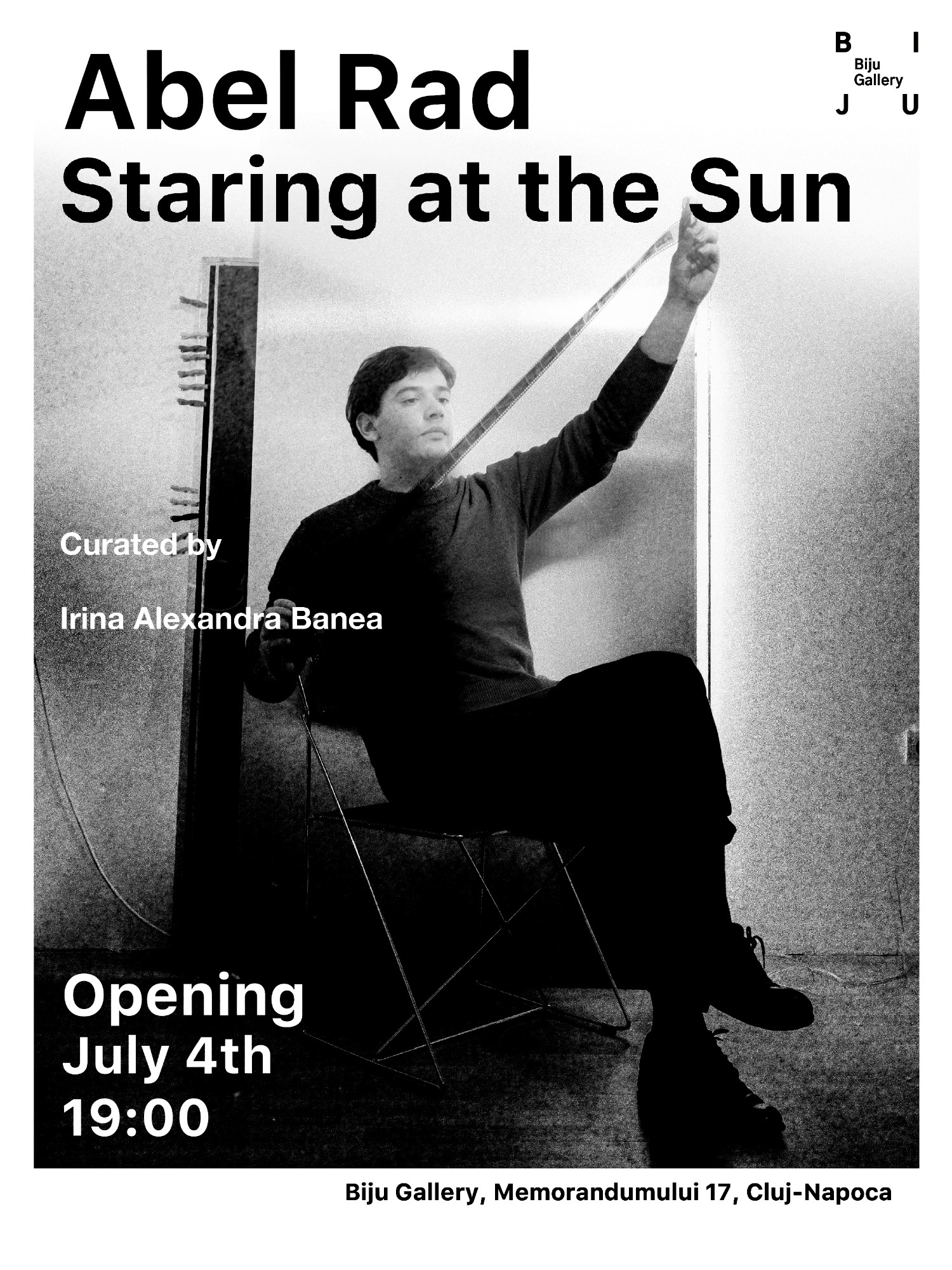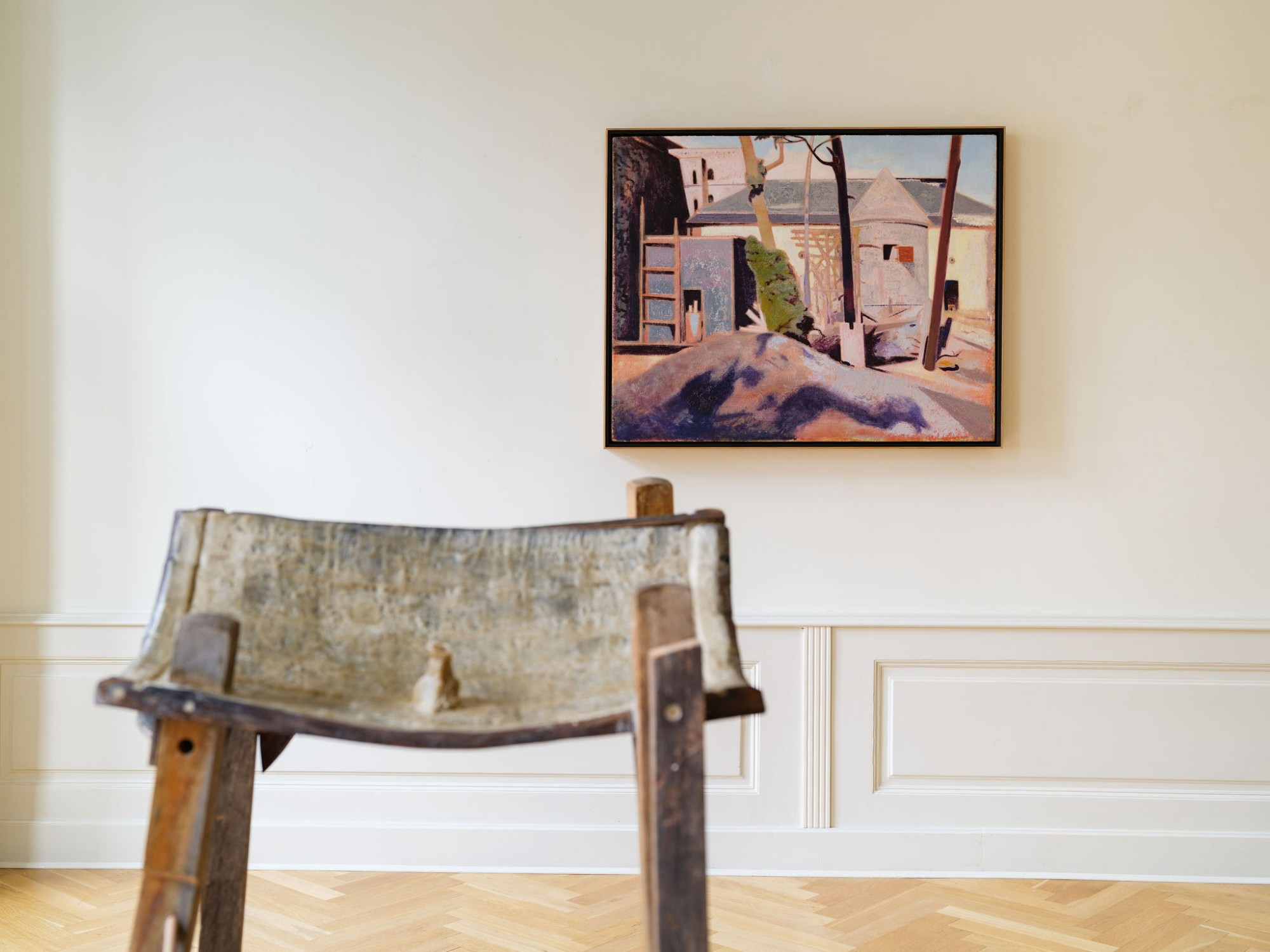
Guided Tour
Staring at the Sun
With Abel Rad
Curated by Irina Alexandra Banea
Any approach to photography involves a double evidence: on the one hand, there is the represented object, made visible through the image; on the other hand, there is the image itself,
which offers itself to the gaze and articulates the visible — that is, the way in which the object appears within the image. Through this solo exhibition, STARING AT THE SUN, Abel Rad
undermines the self-referential certainty of photography, questioning its source — both as an exhibited object and as a represented subject.
Each photograph, each work, each piece of art is in itself a beginning, carrying within it the solitude necessary for its own unfolding. Within the horizon of this becoming, the first moment in which the self seeks to fulfill itself is the one in which it turns its gaze away from the light and withdraws into itself, surrendering to its own obscurity, into solus ipse. In this withdrawal of the
gaze, it is the outer world that finds a way to reach the self, always caught in its own identical obscurity. By overturning this existential assumption, Abel enacts a conversion by ecstatically
turning his gaze outward, toward this excess of the visible that is the world.
Photography remains the source of his coming into presence, a way in which existing becomes synonymous with observing, with stepping outside oneself — a statement embodied by the
work Staring at the Sun, which also gives the exhibition its title: “And are we here, perhaps, merely to say: house, bridge, fountain, gate, jug, fruit tree, window—at most, column, tower? But to
say” (R. M. Rilke, Ninth Elegy). In his works, Abel gathers all this excess of the visible, only to then fix what has been preserved in the flow of consciousness.
In the scenographic object Prisma, the existence of the tragic self is constructed around three photographs that dramatize the silence and the waiting for what is to come. In this fissure between yes and no, between not yet and already, the silence of contemplation settles. Abel brings forth the singularity of a thing only to cast it into the multiple universe of the world and of experiences.
The series The Tragedy of Colours captures the multiplicity to which any singular object refers. Each work becomes a monologue-pause in the flow and ebb of the world, in the tragedy of existence. The thirteen works are not snapshots capturing an abstract ‘I = I’, but a constellation of
gestures belonging to a concrete being caught in a network of interactions. It is colour that restores the ontological connection—without nuance, direct, amplifying both action and an inward, personal feeling. In the colours Abel uses, there is a certain way of inhabiting the world through rhythm, emotional tonality, and depth. Abel’s works have power precisely because they dramatize the ways in which we gain access to the world as such. (Irina Alexandra Banea)
